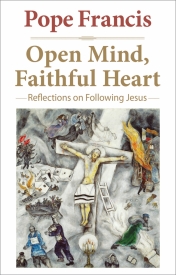To Mary With Love, From the Acadians
Witness French Colonists’ Deep Devotion on New Brunswick’s Eastern Coast

The Acadians sure were a scrappy lot. Sent by France in 1604 to create the colony of Acadia in an area known today as the Canadian Maritime Provinces (New Brunswick, Nova Scotia and Prince Edward Island), they almost immediately faced skirmishes with Great Britain for control of their land. Despite valiant struggles over the next 150 years to maintain their new home and culture, it wasn’t meant to be.
In the mid-18th century, when the Acadians were resisting Britain’s efforts to convert them to Protestantism and squelch their French language, the Brits responded with the Great Deportation, shipping nearly two-thirds of the people to the American colonies, Great Britain or France. More than half died en route.
Despite this devastating event, Acadia was reborn in the 19th century, thanks to one plucky priest, Msgr. Marcel-François Richard. Today, an easy driving tour of two small towns in eastern New Brunswick gives visitors a glimpse of how Msgr. Richard, dubbed the “Father of Modern Acadia,” helped the remaining Acadians survive and thrive.
Saint-Louis-de-Kent
Msgr. Richard was born in 1847 in the small village of Saint-Louis-de-Kent. Ordained in 1870, he subsequently founded 14 churches, three rectories, a convent and about 50 schools. But his main contribution was giving the Acadians a formal identity and pride in their heritage.
Msgr. Richard designed an Acadian flag — the French tricolor, kissed with a Star of the Sea. The star represents the Acadians’ devotion to Mary, plus the North Star that guides mariners home, as many Acadians were fishermen. The star’s color, yellow, is the same color as the papacy.
Msgr. Richard further adopted Aug. 15, the Solemnity of the Assumption, as the national Acadian holiday. He chose Ave Maris Stella (aka Hail, Star of the Sea) as the Acadian national anthem and successfully petitioned Pope Pius X to support the Acadian cause, returning from Rome with a special chalice given him by the pope. (The chalice can be viewed in the Cathedral Museum in nearby Moncton.)
Across the road from the village’s Catholic parish, Saint-Louis des Français, a moving replica of the Lourdes Grotto and Calvary are set into a tiny, wooded hillside on the south bank of the Kouchibouguacis River.
A well-groomed path links the two, forming an “M” for Mary. The grotto, constructed in 1878, sits at the base of the hill next to the river and contains a stone fountain carrying water from a 100-year-old freshwater spring.
At the top of the hill, the replica of Calvary, erected in 1882, consists of statues of Jesus on the cross, Mary and St. John.
The site is a popular pilgrimage stop for devotion to the Virgin Mary, with processions or Masses held here on occasions such as the feasts of St. Anne (July 26) and the Assumption. If you visit between mid-May and mid-October, look for the enormous Acadian flag and statue of Msgr. Richard on an adjacent parcel of land. Saint-Louis is considered the cradle of the Acadian flag, so the town proudly flies this immense version during the more temperate months.
Rogersville
Rogersville sits 25 miles west of Saint-Louis. As soon as you turn onto its main drag, you spot the soaring white steeple of St. Francis de Sales, the church founded and led by Msgr. Richard. The simple, wooden structure, built in 1888, is typical of New Brunswick’s Acadian churches, combining Gothic, Gothic Revival and Classical architectural styles.
But don’t be distracted by the church or you might miss the main attraction: the National Assumption Monument. The monument complex, a designated Provincial Historic Site, sits behind the church and off to one side, and it is surprisingly easy to overlook. Give yourself at least an hour to take in its various components.
The complex is fronted by a soaring entrance arch, built in 1955 to commemorate the bicentennial of the Acadians’ expulsion from the country in 1755. But construction on the monument itself began in 1910, under the direction of Msgr. Richard, whose dream was to honor the Blessed Virgin for her protection of the Acadian people. Fortunately, Msgr. Richard lived to see his dream. The monument — a towering, white chapel — was opened in 1912, featuring a statue of Mary.
Over the years, numerous components were added to the complex. Today, in addition to the chapel, you’ll find outdoor Stations of the Cross, with thoughtful meditations written in French and English; grottos of Our Lady of Lourdes and Our Lady of Fatima; a statue of Msgr. Richard receiving the aforementioned chalice from Pope Pius X; and a small museum of Msgr. Richard’s personal objects.
The monument’s main annual event is a novena, held Aug. 6-14, ahead of the Assumption feast. Then and throughout the year, thousands of pilgrims and Franco-Americans come to venerate Mary and pay homage to Msgr. Richard, who died in 1915. His coffin rests in a niche in the chapel floor, with several Acadian flags fluttering nearby.
As you drive through the area, watch for all of the homes sporting a star on their facades. These aren’t simply decorations, but Stars of the Sea, indicating a proud Acadian family — or supporters — live inside. Msgr. Richard would be pleased.
Melanie Radzicki McManus writes from
Sun Prairie, Wisconsin.
- Keywords:
- Oct. 19-Nov. 1, 2014















